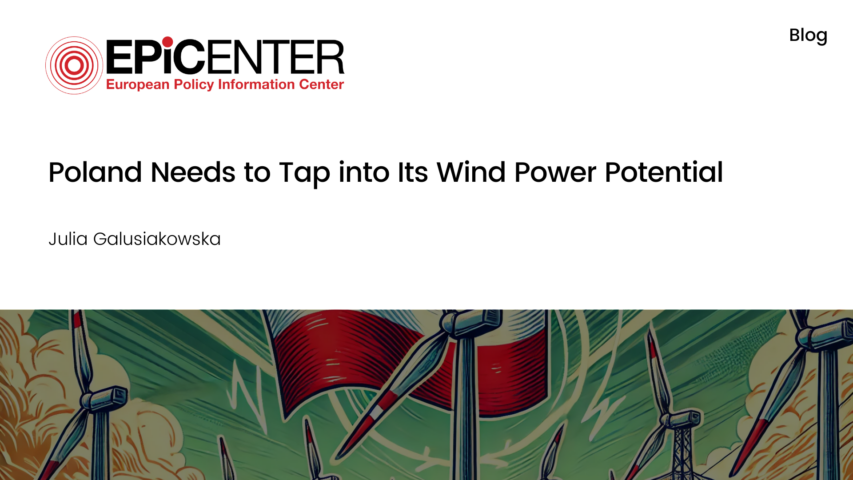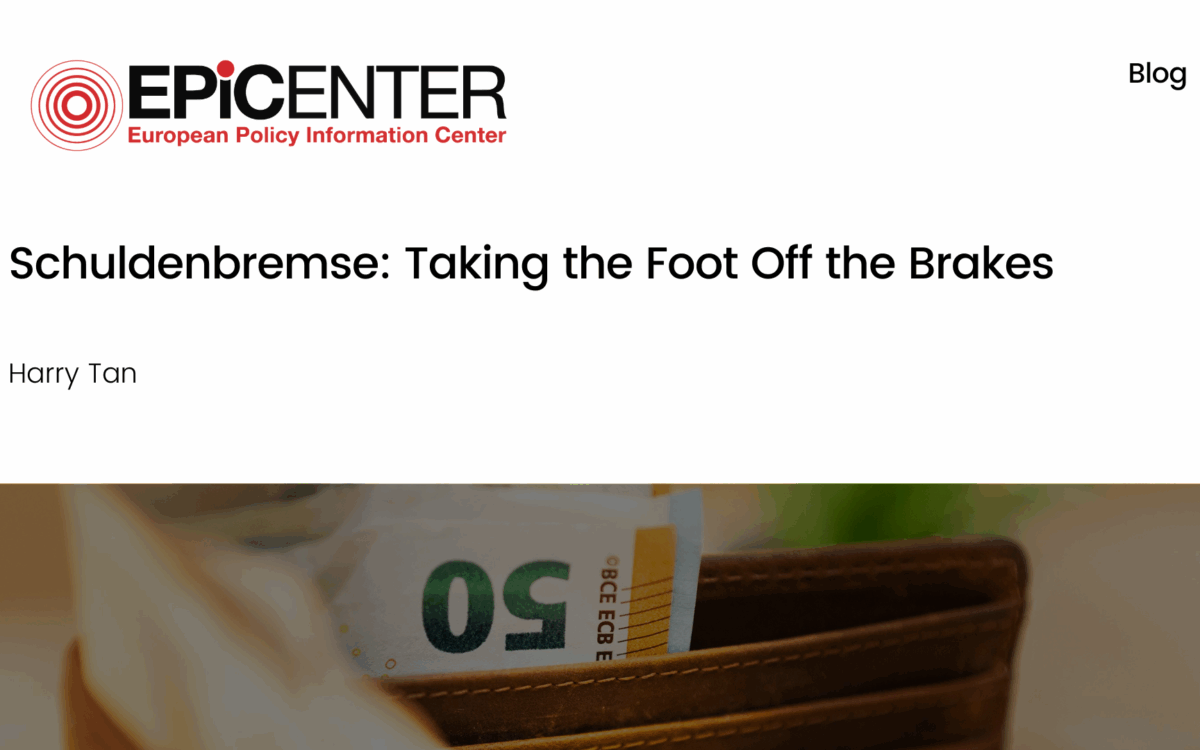Poland Needs to Tap Into Its Wind Power Potential

Poland Needs to Tap Into Its Wind Power Potential
Julia Galusiakowska // 10 March 2022
Poland’s geographic potential for wind energy development is similar to that of industry leaders; yet, the interference of the Polish government continues to block onshore wind power projects. Adopting the tried-and-true distance of 500m between wind turbines and residential buildings, and diversifying its green energy sources through market mechanisms, could be the first steps for Poland to tap into its wind power potential.
The spatial potential for onshore wind energy in Poland is comparable to that of Germany. The European Energy Agency (EEA) measured the area available per type of aggregated land cover class and found that both Germany and Poland have around 350,000 km2 available for wind power development.
Agricultural land is critical in assessing unrestricted technical potential: across all types of land cover, agricultural land offers the highest possible penetration of wind turbines. According to the EEA, Germany and Poland exhibit a similar distribution of agricultural areas, which is further reflected in their comparable technical potential for onshore wind energy (measured in terawatt hours or TWh). Based on the estimated average wind speed of 80m during 2000–2005, Poland has a potential of approximately 3,800 TWh while Germany has a potential of about 4,000 TWh. This places Poland on an equal footing in geographical terms with Germany, ‘a world leader in renewable energy’.
While the politically friendly climate in Germany enables it to lead the way in wind power developments, governmental overregulation in Poland hampers its progress in wind energy.
In 2016, the Law and Justice Party (PiS) introduced the 10H rule, which states that onshore wind turbines must be at a distance of at least 10 times their height from residential buildings. The legal roadblock is a result of the public aversion to windmills: the residents of rural areas (who constitute the key electorate of the PiS) were promised in 2016 that no wind farms would disturb their peace and silence.
The minority government proposed to reduce the distance rule to 500m – a rule that other EU members adopted. Yet, the government majority revised the planned minimum distance back to 700m – which the Parliament officially agreed to on 8 February 2023. Now, the senate will review the legislation.
As predicted by the Polish Wind Energy Association, if the distance rule remains untouched, no new windmills will be built for the next 10 years, decreasing the potential installed capacity of Polish wind by 60–70 per cent. Currently, the government prohibits the use of 98 per cent of Polish territory for building new wind farms.
This legal roadblock is taking place in the broader context of the energy crisis. Given that wind power is five times cheaper than energy from conventional sources, Poland could lower its energy bills if it reduces the distance rule. And yet, if the status quo persists, the country – which hopes to eliminate coal from its energy mix – will have to rely more on offshore wind, nuclear power, and gas to ensure energy security. Some experts are concerned that the distance rule will effectively encourage the construction of more gas-fired power stations.
Moreover, the rule presents a challenge to Poland acquiring EU economic stimulus funds. Without amendments to the distance, Poland would miss EU milestones and thus fail to benefit from the EU Recovery Fund. The financial loss would be equal to approximately zł160 billion (around €33.5 billion).
In contrast to Germany, the PiS seems to lack political will; instead, the Polish government remains determined to sacrifice long-term gains for the short-term support of its short-sighted electorate. The German government has not only reduced the 10H-distancing rule to 500m but has also shown political support for renewable energy sources (RES) by adopting ambitious targets for increasing the share of renewable energy in the country’s energy mix.
Political regulations will further determine economic investments. While the politically friendly climate in Germany draws in overseas investors, Polish overregulation repulses foreign investments. Germany’s energy market stands at 63 GW of total capacity and employs around 135,000 people, which drives the low costs of wind power and the increasing efficiency of wind turbines.
As the distance regulation constitutes a blow to the Polish economy at the most fundamental level, following the well-tested European 500m solution is the first step for Poland to tap into its wind power potential. The long-term benefits should take precedence over the short-term satisfaction of the PiS electorate.
And yet, we do not suggest that Poland should only rely on wind power, as mixed energy sources remain essential for a sustainable energy policy. This is particularly true in the context of the Energy Policy of Poland until 2040 (PEP2040) – a Polish government plan aiming for a 30 per cent cut in emissions by 2040. To minimise the dominance of hard coal and to diversify the energy sources needed to achieve energy security, rethinking wind power policy should go hand-in-hand with the developments of nuclear power and niche RES showing the largest growth dynamics. The Polish government must let go of overregulation and let the market mechanisms find the best energy mix.
EPICENTER publications and contributions from our member think tanks are designed to promote the discussion of economic issues and the role of markets in solving economic and social problems. As with all EPICENTER publications, the views expressed here are those of the author and not EPICENTER or its member think tanks (which have no corporate view).



